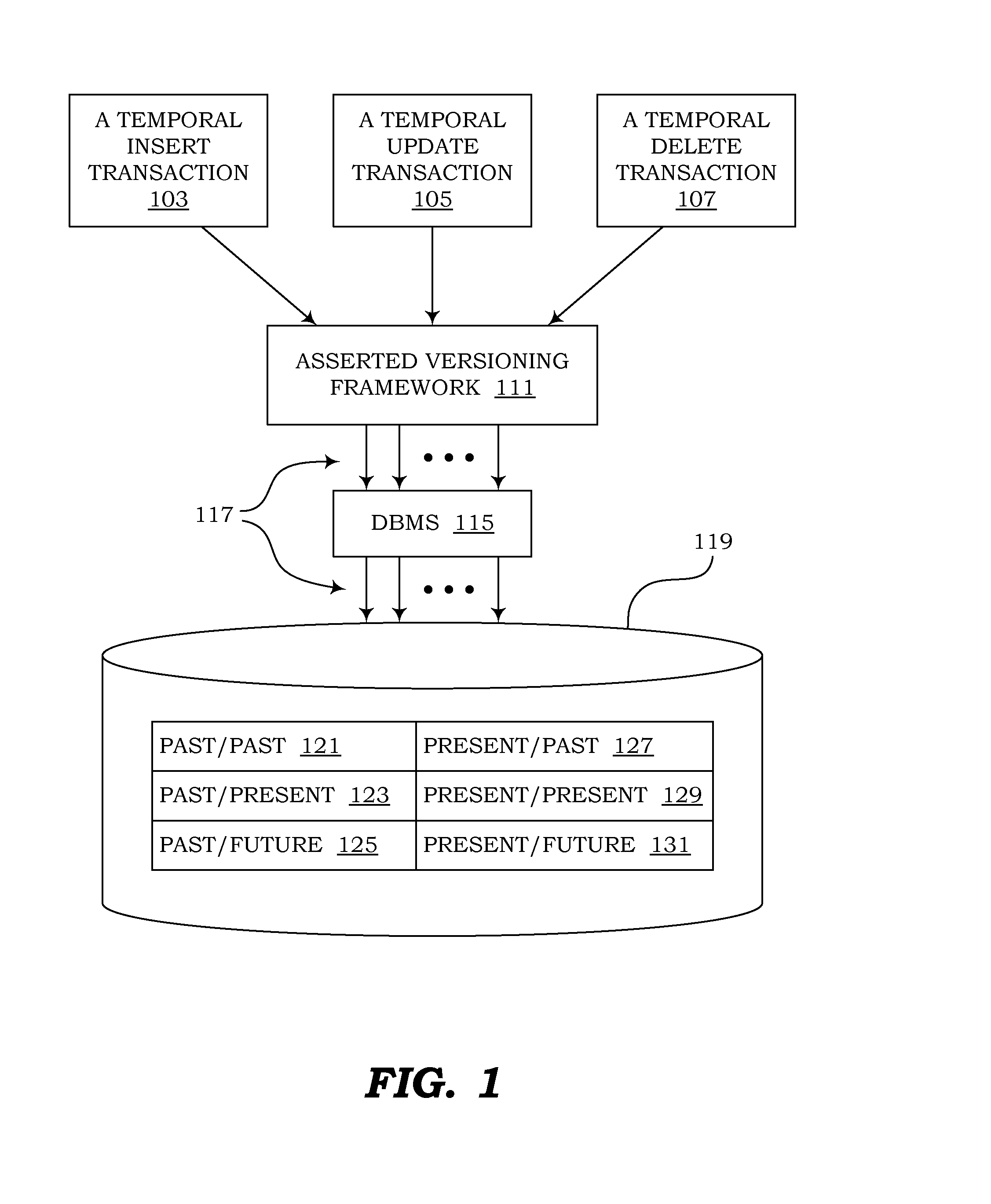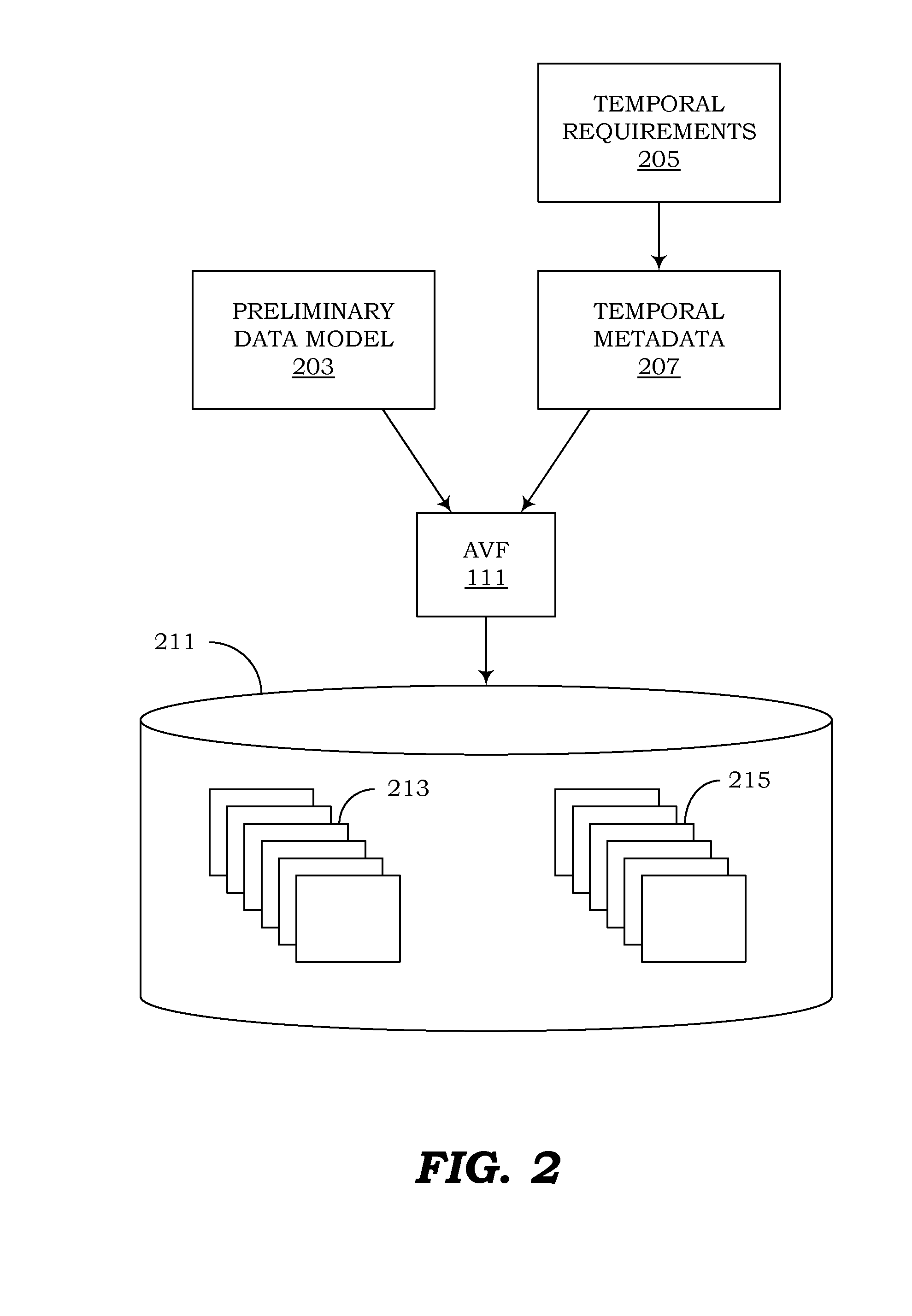Management of temporal data by means of a canonical schema
a temporal data and schema technology, applied in the field of temporal data management, can solve the problems of not allowing data to be associated with future periods of assertion time, unable to compare periods of time that belong to different temporal dimensions, and 10 g flashback queries cannot address the problems involved in creating and maintaining temporal data
- Summary
- Abstract
- Description
- Claims
- Application Information
AI Technical Summary
Benefits of technology
Problems solved by technology
Method used
Image
Examples
Embodiment Construction
[0251]We begin by providing prima facie evidence that our various embodiments are useful, novel and unobvious. A book we have written and which is soon to be published—Managing Time in Relational Databases: How to Design, Update and Query Temporal Data (Morgan-Kaufmann, 2010)—describes an invention which is the amalgamation of various embodiments in this patent application and is incorporated by reference herein in its entirety. An endorsement from Dr. Richard Snodgrass, the author of the TSQL proposals to the SQL standards committee, and a leading researcher in the field of managing temporal data, appears on the outside back cover of our book. This endorsement states that “The authors present an original and comprehensive conceptual approach called Asserted Versioning, which includes support for bi-temporality and is a significant advance in the theory and practice of managing time-varying data.”
[0252]We have already introduced and defined several important concepts, including the ...
PUM
 Login to View More
Login to View More Abstract
Description
Claims
Application Information
 Login to View More
Login to View More - R&D
- Intellectual Property
- Life Sciences
- Materials
- Tech Scout
- Unparalleled Data Quality
- Higher Quality Content
- 60% Fewer Hallucinations
Browse by: Latest US Patents, China's latest patents, Technical Efficacy Thesaurus, Application Domain, Technology Topic, Popular Technical Reports.
© 2025 PatSnap. All rights reserved.Legal|Privacy policy|Modern Slavery Act Transparency Statement|Sitemap|About US| Contact US: help@patsnap.com



